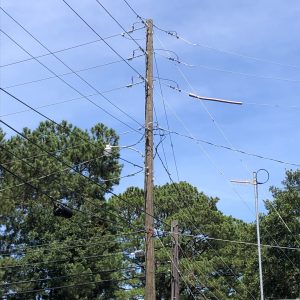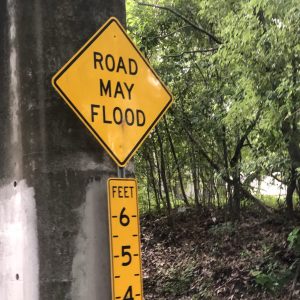Want to experience the greatest in board studying? Check out our interactive question bank podcast- the FIRST of its kind here: emrapidbombs.supercast.com
Authors: Blake Briggs, MD
Peer Reviewer: Mary Claire O’Brien, MD
Is hypertensive “urgency” really urgent?
Most patients with BP >180/>120 have no major acute end-organ damage necessitating rapid lowering BP. In fact, it has been demonstrated that this might actually be more harm than good for the patient. This is deemed “hypertensive urgency”, where one has acutely elevated BP +/- headache in the setting of no end-organ ischemia. This definition has come under fire lately and it seems more and more that it’s not a real entity. There’s really no high-quality evidence out there to guide management of these patients.
We don’t believe there is such a pathology as hypertensive urgency, and we are against using it as a real medical term. In short, we don’t think it exists.
Those with elevated BP and who have no evidence of end-organ ischemia can follow up as outpatient. We have noticed that even boards have now shifted away from aggressively lowering BP. In fact, boards want you to send these asymptomatic patients home. Be more minimalistic and do not treat aggressively if the patient is asymptomatic with an elevated BP. Place the patient in a quiet, undisturbed room with the lights dimmed, and remeasure their BP in 30 minutes. We guarantee in most instances it will go down. Discharge with close outpatient follow up.
There are those who do have symptoms with an elevated BP, however, need to be worked up for…
Hypertensive Emergency and the wastebasket of medicine
<1% of ER visits all year. Elevated BP with end-organ ischemia. This is such a lame term, and we really aren’t a fan of it because hypertensive emergency is a wastebasket category for basically any patient with elevated blood pressure and some underlying pathology.
Accelerate your learning with our EM Question Bank Podcast
- Rapid learning
- Interactive questions and answers
- new episodes every week
- Become a valuable supporter
We encourage you to think of hypertensive emergency more of a “chief complaint” or “presentation” indicating a possible severe underlying disease (aortic dissection, intracranial bleeding, preeclampsia, SCAPE, etc).
By itself, isolated hypertensive emergency was previously referred to as “malignant hypertension.” It can be any high blood pressure, contrary to popular belief. Naturally, the higher the BP, likely the higher the risk. It can also develop in patients without history of hypertension.
We don’t really understand the pathophysiology of isolated hypertensive emergency. Some initial, abrupt rise in vascular resistance likely occurs, resulting in downstream disruption of the arterial baroreflex and neurohormonal pathways.
In patients who are symptomatic with elevated blood pressure, a workup should be pursued. Usually, the cause is quickly identified (X-ray and story fitting SCAPE, CT showing ICH or aortic dissection, etc).
Commonly ordered laboratory tests include +/- troponins, BMP (Cr), EKG, CXR, +/- CT head.
Management of hypertensive emergency
This is the most high-yield portion and the most heavily tested area for exams.
Below are classic conditions that require emergent blood pressure lowering and addressing the underlying condition. We have separate, detailed guides on these conditions as well.
Posterior reversible encephalopathy syndrome (previously called hypertensive encephalopathy): a disorder of reversible subcortical vasogenic edema in patients with acute neurologic symptoms and classic CT/MRI features.
Classic symptoms include headache, vision changes, altered mental status, nausea/vomiting, and even seizures.
Aggressive BP management usually results in rapid symptom improvement in patients. There are no randomized trials displaying a proper target goal, but ~160/100 mmHg is what people seem to be quoting.
Pro tip: Many of these patients are in a volume-contracted state, and if they can tolerate IV fluids this might be greatly beneficial for them. Think about it: initiating IV antihypertensives force the circulatory system to relax suddenly, decreasing blood volume to already-damaged organs. Think about 500-1000 mL of lactated Ringers to help patients out before aggressive IV antihypertensive therapy.
Agents used include clevidipine > nicardipine > nitroprusside.
Clevidipine has the advantage of having fast onset, and easier titration. At many shops it is typically cheaper as well.
Labetalol (not typically available as a drip), and its repeated dosing make it an ineffective management strategy.
Aortic dissection: This is the truest form of hypertensive emergency. Rapid lowering is needed as fast as possible in order to prevent false lumen expansion. Target: “as low as possible”, but realistically 100-120 systolic in <30 minutes.
Agent of choice: Esmolol > Diltiazem > Nicardipine/Clevidipine > Nitroprusside
Fentanyl boluses need to be occurring simultaneously with BP control as it reduces sympathetic pain response which increases HR and BP.
Agents NOT to use: Nitroglycerin, hydralazine, or other vasodilators which cause increase in inotropy.
Check out our full review on aortic dissection here.
Subarachnoid hemorrhage: not clear and still debated. Goal of SBP <160 is reasonable. Labetalol, nicardipine, clevidipine are preferred. Benefit of lowering BP might be offset by risk of infarction (CPP = MAP – ICP). i.e. if ICP is high then the only variable maintaining perfusion is MAP. Patient’s consciousness might be a helpful marker: alert and oriented = SBP ~140. Patient impaired = SBP ~160.
Agents of choice: nicardipine, enalapril
Management of vasospasm: a devastating complication of SAH. Oral nimodipine should be given.
Check out our full review of SAH here.
Non-traumatic intracerebral hemorrhage: this is still a matter of debate, but let’s try to keep it somewhat grounded.
SBP >220, aggressive reduction of BP is warranted with IV medication to ~140 SBP.
SBP >220-150 and evidence of increased ICP, reduce BP using intermittent/continuous IV meds to modest range ~140 SBP over the course of the first few hours. It might improve functional outcomes, but it has not been shown to reduce mortality and might increase risk of AKI.
Agent of choice: nicardipine > esmolol, enalaprilat
Ischemic stroke: broken down into the following-
tPA candidates- BP needs to be <185/110 prior to tPA administration. No aggressive lowering is warranted if BP is already <185/110.
non-tPA candidates- BP needs to be <220/120. No aggressive lowering is warranted if <220/120.
Agent of choice: clevidipine > nicardipine. A couple of labetalol pushes may be all that is needed in some patients.
Check out our full review guide on acute stroke management here.
SCAPE: the goal is to reduce afterload and relieve volume excess. Diuretics can be mainstay, but they take a while to work and minimally affect BP in the acute setting. Nitroglycerin is first line. Hydralazine should not be used as its effect is unpredictable and can increase inotropy.
Check out our full review guide on SCAPE here. People really mess up the management on this condition quite often.
Acute coronary syndrome: nitroglycerin, nicardipine, clevidipine, metoprolol.
Check out our full review on ACS management here.
Pregnancy hypertensive emergency: BP >= 140/90 in pregnancy, especially after the 20th week, should raise concern. Agents of choice: methyldopa, hydralazine, labetalol. Magnesium is absolutely needed and is the mainstay therapy in suspected pre-eclampsia or eclampsia. HELLP syndrome is a life-threatening complication of pregnancy that is considered to be a variant of pre-eclampsia: Hemolysis, ELevated liver enzymes, Low Platelets. It typically occurs during the later stages of pregnancy but can occur postpartum.
References
1. Katz JN, Gore JM, Amin A, et al. Practice patterns, outcomes, and end-organ dysfunction for patients with acute severe hypertension: the Studying the Treatment of Acute hyperTension (STAT) registry. Am Heart J 2009; 158:599.
2. Johnson W, Nguyen ML, Patel R. Hypertension crisis in the emergency department. Cardiol Clin 2012; 30:533.
3. Martin JF, Higashiama E, Garcia E, et al. Hypertensive crisis profile. Prevalence and clinical presentation. Arq Bras Cardiol 2004; 83:131.
4. Zampaglione B, Pascale C, Marchisio M, Cavallo-Perin P. Hypertensive urgencies and emergencies. Prevalence and clinical presentation. Hypertension 1996; 27:144.
5. Elliott WJ. Clinical features in the management of selected hypertensive emergencies. Prog Cardiovasc Dis 2006; 48:316.
6. Ahmed N, Wahlgren N, Brainin M, et al. Relationship of blood pressure, antihypertensive therapy, and outcome in ischemic stroke treated with intravenous thrombolysis: retrospective analysis from Safe Implementation of Thrombolysis in Stroke-International Stroke Thrombolysis Register (SITS-ISTR). Stroke 2009; 40:2442.
7. Jauch EC, Saver JL, Adams HP Jr, et al. Guidelines for the early management of patients with acute ischemic stroke: a guideline for healthcare professionals from the American Heart Association/American Stroke Association. Stroke 2013; 44:870.
8. Li JZ, Eagle KA, Vaishnava P. Hypertensive and acute aortic syndromes. Cardiol Clin 2013; 31:493.
9. Anderson CS, Selim MH, Molina CA, Qureshi AI. Intensive Blood Pressure Lowering in Intracerebral Hemorrhage. Stroke 2017; 48:2034.
10. Peacock WF 4th, Hilleman DE, Levy PD, et al. A systematic review of nicardipine vs labetalol for the management of hypertensive crises. Am J Emerg Med 2012; 30:981.
11. Lau J, Antman EM, Jimenez-Silva J, et al. Cumulative meta-analysis of therapeutic trials for myocardial infarction. N Engl J Med 1992; 327:248.
12. Hemphill JC 3rd, Greenberg SM, Anderson CS, et al. Guidelines for the Management of Spontaneous Intracerebral Hemorrhage: A Guideline for Healthcare Professionals From the American Heart Association/American Stroke Association. Stroke 2015; 46:2032.
13. Whelton PK, Carey RM, Aronow WS, et al. 2017 ACC/AHA/AAPA/ABC/ACPM/AGS/APhA/ASH/ASPC/NMA/PCNA Guideline for the Prevention, Detection, Evaluation, and Management of High Blood Pressure in Adults: A Report of the American College of Cardiology/American Heart Association Task Force on Clinical Practice Guidelines. Circulation 2018; 138:e484.
14. Ohwaki K, Yano E, Nagashima H, et al. Blood pressure management in acute intracerebral hemorrhage: relationship between elevated blood pressure and hematoma enlargement. Stroke 2004; 35:1364.
15. Qureshi AI, Palesch YY, Barsan WG, et al. Intensive Blood-Pressure Lowering in Patients with Acute Cerebral Hemorrhage. N Engl J Med 2016; 375:1033.
16. Connolly ES Jr, Rabinstein AA, Carhuapoma JR, et al. Guidelines for the management of aneurysmal subarachnoid hemorrhage: a guideline for healthcare professionals from the American Heart Association/american Stroke Association. Stroke 2012; 43:1711.
17. Schmidt JM, Ko SB, Helbok R, et al. Cerebral perfusion pressure thresholds for brain tissue hypoxia and metabolic crisis after poor-grade subarachnoid hemorrhage. Stroke 2011; 42:1351.
18. Wijdicks EF, Vermeulen M, Murray GD, et al. The effects of treating hypertension following aneurysmal subarachnoid hemorrhage. Clin Neurol Neurosurg 1990; 92:111.


